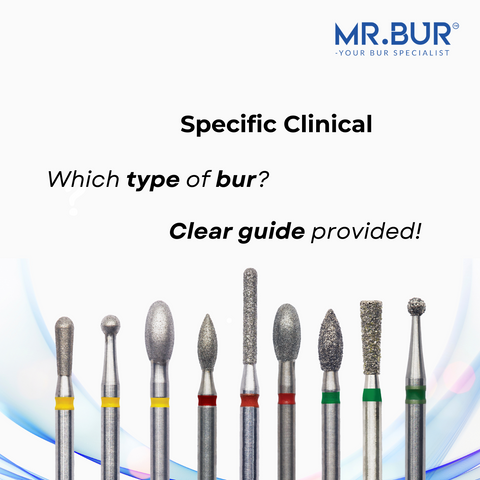
Crown preparations are a common restorative procedure that dentist encounter every day. These are some good step-by-step guide practices for preparations done quickly and efficiently. This will help dentist ensure final crown preparation to give patient an excellent final restoration.
First, dentist shall decide the type of material out of crown will be made. Monolithic or layered? Gold, porcelain fused to metal, lithium disilicate glass or zirconia? As each material requires different reduction amounts and preparation design – and dentist must decide which will allow to reach or exceed patient's final desired end result.
Now let’s start
1. Remove old restorative material and decay to verify restorability in its current state and need for possible root canal therapy and/or crown lengthening. Dentist do need to determine if a crown restoration is going to be the most conservative and longest lasting or would the tooth and patient be better served doing an inlay or onlay restoration?
2. Isolate the tooth for proper bonding and adhesive protocol to place the build-up material of choice. Don’t overbuild the tooth as this waste material but also can affect the simplicity of the next step.
3. Now ready for the crown preparation, if the posterior molar with large filling, then dentist may start with this step. With depth cuts on the occlusal table with a depth-cutting burs that for the needed reduction of the restoration of choice. Take depth-cutting bur down the central groove, across the cusps and out the grooves to depth. Now, there is no confusion of how much to remove
4. Then place a small diameter bur to remove the pieces of tooth that are sticking up between the depth cuts. Place small diameter bur in the groove and either push or pull, which cuts or “amputates” that segment of the tooth off rather quickly and efficiently.
5. Then take the small diameter bur on the facial and lingual and do depth cuts in two planes: in the incisal 1/3 and then to an approximate area of margin area along the gingival height. This bur is 1mm in diameter, so adjust as needed for material choice. Be sure that account for facial/lingual area where need added thickness for the functional cuspal area.
6. Place the small diameter bur back in the depth cuts and pull/push again to remove the segments of tooth remaining between the depth cuts quickly. It is more efficient to cut these segments away vs. milling the tooth back and forth at this stage. Once the enamel is reduced, then dentist can easily smooth and refine the margins.
7. Carry the bur carefully between the interproximal areas to break contact and follow the gingival contours and/or restorative material. 8. Rough finish the margins with bur and round off any immediate edges or ledges.
9. Switch to a larger, finer diamond bur to refine and smooth margins and preparation overall.
10. Done!
Magic tools that you may want to include in your arsenal!

Diamond Burs, Carbide Burs, Surgical & Lab Use Burs, Endodontic burs, IPR Kit, Crown Cutting Kit, Gingivectomy Kit, Root Planning Kit, Composite Polishers, High Speed Burs, Low Speed Burs
Subscribe our newsletter now!




